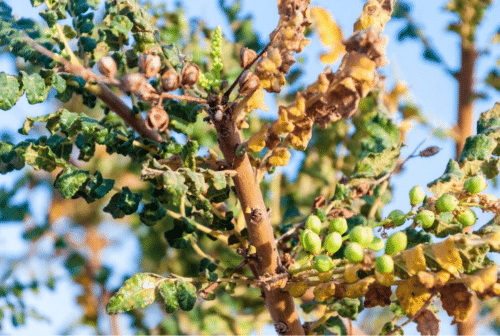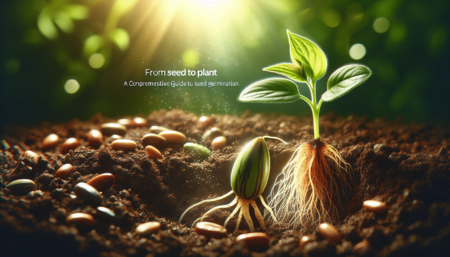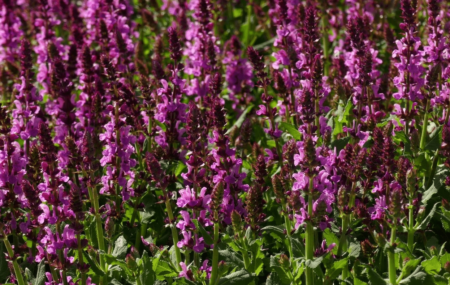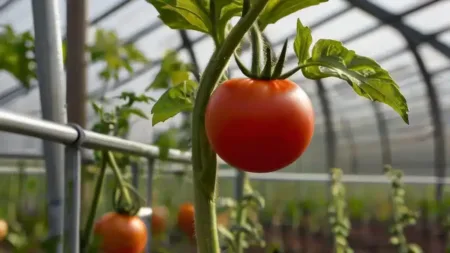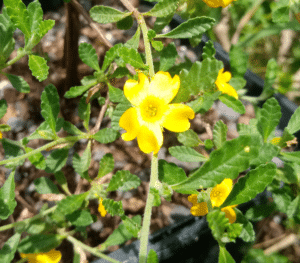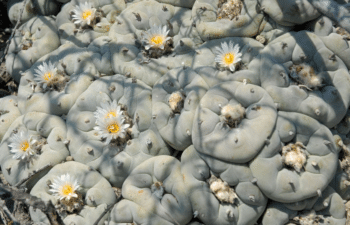- Introduction: Why grow Boswellia sacra?
- Advantages of growing Boswellia sacra
- First steps in planning the cultivation of Boswellia sacra
- How to find the best location for sowing
- What you need to know about planting and caring for Boswellia sacra
- Fertilizers that are needed to keep your plant healthy
- Tips for getting rid of unwanted insects and diseases in your growing area
- Dealing with drought when growing Boswellia Sacra
- Ripening time and harvesting the plants
- Conclusion
Here you can find our fresh Boswellia sacra seeds for growing at home!
Growing Boswellia sacra
Why grow Boswellia sacra? Boswellia sacra, also known as the frankincense tree, offers numerous benefits that make it worth growing. In addition to its aesthetic beauty and pleasant fragrance, Boswellia sacra also has medicinal properties that have been valued for centuries. If you choose to grow Boswellia sacra, not only will you have a stunning plant in your garden, but you will also be able to benefit from its many uses. In this blog article, we will show you how to plan the cultivation of Boswellia sacra, find the best location for sowing and what you need to know about planting and caring for the plant. We will also give you tips on how to keep your plant healthy, fight unwanted insects and diseases and deal with drought. In the end, you will be able to bring your Boswellia sacra plants to maturity and enjoy the harvest.
1 Introduction: Why grow Boswellia sacra?
If you are looking for a new plant that is not only beautiful to look at but also has many health benefits, then you should definitely consider growing Boswellia sacra. This plant has been known for centuries for its anti-inflammatory properties and is often used in traditional medicine. But there are many more reasons why you should grow Boswellia sacra. If you want to treat yourself to home-grown herbs and spices or are simply looking for a new hobby that supports your physical health while challenging you mentally, then growing Boswellia sacra is a great choice! In this article, you'll learn everything you need to know about growing this fascinating plant - let's get started!
2. advantages of growing Boswellia sacra
A major advantage of growing Boswellia sacra is its use in traditional medicine. The resins extracted from the trees are known for their anti-inflammatory and pain-relieving properties. They are often used to treat arthritis, asthma and other conditions. By growing your own, you have control over the quality of the plants and the resins extracted from them. You can ensure that they are free from pesticides and other chemicals for the best results. In addition, growing Boswellia sacra can also be a financially rewarding decision, as the resin is in high demand on the market. With proper planning and care, your plants can become a valuable source of income.
3. first steps in planning the cultivation of Boswellia sacra
If you are thinking about growing Boswellia sacra, there are some important preparations you need to make. The first step is to plan your cultivation. You should find out how much space you need and think about how large your growing area should be. You should also consider what type of soil is best suited for cultivation and what climatic conditions are necessary. Another important aspect when planning the cultivation of Boswellia sacra is the location. It is important to find a place that offers sufficient sunlight and is protected from wind and heavy rain. The area should also be free of weeds and have good drainage. As soon as you have found the ideal location, you can start planting. You should make sure that the seeds are planted at a sufficient distance from each other and have enough space to grow. To ensure that your plants stay healthy, they need regular fertilization and good watering. Insect infestations or diseases should be treated as soon as possible to prevent damage to the plants. If everything goes right, you can harvest after just a few years! With these simple steps, you are on your way to successfully harvesting Boswellia sacra!
4. how to find the best location for sowing
If you've decided to grow Boswellia sacra, you're on your way to a rewarding experience. But before you can start growing, you need to find the best location for sowing. The goal is to find a place that receives sufficient sunlight while being protected from strong winds. A location with plenty of sunlight promotes the growth of your plants and ensures that they stay healthy. At the same time, a wind-protected location protects your plants from damage caused by extreme weather conditions such as storms or hail. Also make sure that the soil in your growing area is well drained and not too moist. If the soil is too wet, this can cause bacteria and fungi to colonize and affect the health of your plants. Ideally, the land should be slightly sloped to ensure that excess water can drain away. Another important consideration when looking for a suitable location to sow Boswellia sacra is the availability of nutrients in the soil. A good way to improve the soil is to add organic fertilizers such as compost or animal manure. Overall, the best location for sowing Boswellia sacra provides sufficient sunlight and protection from strong winds, as well as well-drained soil with plenty of available nutrients. With these prerequisites, nothing stands in the way of your successful cultivation of Boswellia sacra.
5 What you need to know about planting and caring for Boswellia sacra
If you decide to grow Boswellia sacra, there are a few things you need to consider to get the best results. One important thing is planting and caring for the plant itself. Before you start sowing, however, you should make sure that your location is optimal and receives sufficient sunlight. Make sure your soil is well-drained and contains the right nutrients. Once you have found the perfect location, you can start planting. Place the seeds in the soil and keep it moist but not too wet. Once the plants are growing, you should water and fertilize them regularly. It is best to use organic fertilizers such as compost or manure from animals such as sheep or goats. To keep unwanted insects and diseases at bay, you can use natural methods such as neem oil or garlic sprays. It's also important to make sure your plants get enough water, especially during dry spells in the summer months of July to September - make sure the soil never dries out completely! When it's time to harvest (around 8-10 years after first growth), you should use a sharp knife to cut off only small parts of the stem to avoid damaging it. With these tips you should be able to grow and harvest healthy Boswellia sacra plants.
6. fertilizers that are needed to keep your plant healthy
To ensure that your Boswellia sacra plants grow healthy and strong, it is important to give them the right fertilizers. Choosing the right fertilizer depends on many factors, such as soil pH and nutrient composition. A good way to adapt the soil to the needs of your plant is to use organic fertilizers. These are rich in nutrients and promote the growth of healthy roots and a strong leaf structure. Another option is to use mineral fertilizers. These are often more concentrated than organic fertilizers and can provide a quick release of nutrients. However, it is important to note that mineral fertilizers can also make your plants more susceptible to disease or damage from over-fertilization. You should therefore always carefully consider which fertilizer is most suitable for your Boswellia sacra plants and how much should be applied.
7. tips for getting rid of unwanted insects and diseases in your growing area
If you have decided to grow Boswellia sacra, it is important that you also know how best to protect your plants from unwanted insects and diseases. There are a few tips and tricks that can help you with this. For example, you should make sure that your growing area is kept clean. Regularly remove weeds and dead plant parts to prevent the growth of pests. Another option is to introduce natural enemies of pests into your garden. Ladybugs or lacewings, for example, can effectively combat aphids. Healthy soil conditions are also important for protection against diseases. Therefore, use organic fertilizers regularly and ensure sufficient watering. If an infestation of pests or diseases nevertheless occurs, you should act quickly and take targeted action against them. Natural remedies such as neem oil or nettle extract are often more effective than chemical pesticides. With these tips, you can ensure that your Boswellia sacra plants remain healthy and can grow optimally.
8. dealing with drought when growing Boswellia Sacra
When growing Boswellia Sacra, it is important to deal with the various challenges that can arise. One particular hurdle is drought, as this plant is usually grown in dry climates such as Yemen or Oman. There are a few important factors to consider when dealing with drought when growing Boswellia Sacra. Firstly, you should ensure that the soil is sufficiently permeable and well-drained to prevent water from pooling. In addition, it can be helpful to apply mulch materials and use irrigation techniques such as drip irrigation or drip irrigation to promote root growth and use water more effectively. The choice of the right variety and careful care of the plants are also crucial for the successful cultivation of Boswellia Sacra in dry conditions. Ultimately, however, it also requires a certain amount of experience and experimentation to find and successfully apply the optimal methods for your own location.
9. ripening time and harvest of the plants
When growing Boswellia sacra, it is important to keep an eye on the ripening time and harvesting of the plants. The trees are usually around 8-10 years old before they produce the resin known for frankincense. When the trees start flowering and small fruits form, this is a sign that they are ready for harvesting. The best time to harvest the resin is between June and September, when the weather is dry and the temperatures are high enough. The resin is obtained by cutting into the bark and can then be dried to make incense or used as a fragrance. An experienced farmer knows exactly when the best time to harvest is to ensure the best quality resin. There are various techniques for extracting the resin, such as the "cupping" or "foam rubber method", which require the use of specific tools. Careful handling during harvesting not only ensures good quality resin but also that the tree is not damaged and can continue to grow healthily.
10. conclusion
In conclusion, growing Boswellia sacra can be a rewarding and satisfying activity. The plant offers numerous benefits such as the production of incense, its medicinal properties and its ability to revitalize dry areas. When planning cultivation, it is important to find the best location for sowing and to ensure that the plants are adequately cared for. Regular fertilization and careful removal of unwanted insects and diseases can ensure that the plants remain healthy. It is also important to remember that drought is an important factor when growing Boswellia sacra and appropriate measures must be taken. When it is time to harvest, one should be careful and follow best practices. All in all, growing Boswellia sacra offers many possibilities and opportunities for farmers and hobby gardeners alike.
Note: The information in this article is for informational purposes only and is not intended to replace the advice of a doctor or other healthcare professional. Always consult a doctor before using any new herbs or supplements, and always check that certain plants are legal in your country before growing them.

